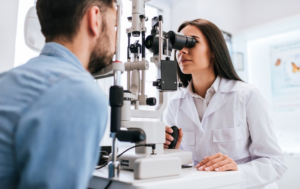With so many Best Self Improvement Podcasts For Young Adults out there, it can be hard to know where to start. But the right one can help you make positive changes in your life and feel inspired every day.

From hypnotherapists to productivity influencers, these shows offer advice that will change your life for the better.
This podcast equips listeners with science-backed skills to become their best self. Hosted by top coaches AJ Harbinger and Johnny Dzubak, each episode reveals powerful human dynamics insights and practical self-mastery tools. The podcast covers topics such as interpersonal relationships, overcoming anxiety, and becoming your best self at work. This podcast is a great way to boost your social skills, improve your self-esteem, and reach your personal goals.
Using simple language, this podcast helps people build healthy habits that lead to greater well-being. Its guests include fitness influencers, authors, and personal trainers. The podcast is available on multiple platforms and can be downloaded for free. This podcast is a must-listen for anyone looking to make positive changes in their life.
The Minimalists are Emmy-nominated Netflix stars and New York Times bestselling authors who help their followers live meaningful lives with less through their website, books, and podcasts. Their minimalist lifestyle has been featured in Time, GQ, and the Wall Street Journal. They are the “American ringleaders of minimalism” and have spoken at Harvard and Apple.
This popular podcast features a variety of guests, from actors to musicians to fitness influencers. It offers a wide range of personal improvement tips and advice, including morning routines and daily habits. It also discusses strategies to achieve success, ranging from health and fitness to career and relationships. Its guests discuss their struggles and triumphs, providing listeners with a holistic perspective.
In this podcast, New York Times bestseller Gretchen Rubin discusses happiness and explains how to achieve it. Each episode features a tip that is easy to implement in real life, making this a great podcast for busy people. Its focus on simplicity makes it easy to digest and follow, while still offering the latest research and techniques in personal development.
This podcast is a must-listen for young adults looking to learn how to deal with stress and other psychological challenges. It combines scientific research with real-life stories from the host’s own experience to offer practical advice and motivation. The podcast is available on a variety of platforms and is a great option for those who are struggling with depression or anxiety.
Hurdle
Whether you want to improve your productivity or become a more positive person, these motivational podcasts will help you achieve your goals. The key to extracting maximum value from these podcasts is through engaged listening, which involves taking notes during the episodes and reflecting on their insights. It also helps if you can convert these insights into actionable strategies, transforming inspiration into tangible progress in your life.
Suitable for a broad audience, this podcast features conversations with experts and thought leaders in various fields. This diverse group of guests provides inspiring stories and practical wisdom for overcoming challenges. In addition, the podcast aims to break down mental health stigmas and encourages individuals to take control of their own wellbeing.
This podcast is designed to inspire young adults and help them live their best lives. Each episode focuses on a different topic, from achieving success in the workplace to tackling depression. Each episode is short and offers listeners actionable tips and advice on how to overcome their challenges.
The podcast is hosted by Gabby Bernstein, who is a life coach and bestselling author. It combines her own experiences with the expertise of other thought leaders. This podcast is a great resource for young adults who are looking to learn and grow from their mistakes.
Featuring interviews with entrepreneurs, athletes, and other celebrities, the podcast explores how they achieve their goals. Its short, bite-sized episodes are ideal for people with busy lifestyles. The podcast also provides useful tactics for improving learning and memory.
Aimed at black women navigating life’s complexities, the podcast delves into profound discussions with expert guests and delivers wisdom to foster resilience and mindfulness. Its engaging conversations and cultural relevance resonate with a broad audience, empowering listeners to embrace self-care and personal growth.
This podcast focuses on the power of small actions in boosting motivation and creating sustainable change. Its uplifting episodes and inspiring interviews encourage listeners to prioritize their mental wellness, cultivate gratitude, and build a strong community. In addition, it offers practical advice on overcoming failure and building resilience in the face of setbacks.
The One You Feed
If you’re struggling with depression, anxiety, or other mental health issues, podcasts like The One You Feed can help. The podcast focuses on self-care and features interviews with psychologists, therapists, and other experts in the field. It also addresses topics such as mindfulness, a healthy diet, and positive relationships. It’s not a substitute for therapy or other professional help, but it can provide motivation and encouragement.
The One You Feed is hosted by a behavioral coach and author. It explores the root causes of depression, anxiety, and other mental health issues and offers solutions. The podcast features interviews with prominent thought leaders and spiritual teachers, such as Deepak Chopra and Gretchen Rubin. It also discusses self-destructive habits and teaches listeners to change negative thoughts and emotions.
Unlike other motivational podcasts, The One You Feed takes a realistic approach to self-improvement. It encourages listeners to face their fears and take action in the face of adversity. It also encourages listeners to be mindful and practice gratitude in daily life.
This self improvement podcast is hosted by author and psychologist Laurie Beth Jones, who explores the science of happiness. Each episode explores a different aspect of happiness, such as mindfulness, gratitude, and compassion. The podcast also explores how these traits can impact a person’s mental, emotional, and physical health.
In addition to discussing psychological and personal development, this podcast is also a great resource for career development. The podcast covers a range of topics, including improving communication skills, building a positive work-life balance, and creating a more fulfilling lifestyle. It’s recommended that you subscribe to the podcast to keep up with the latest episodes and updates.
Many people find podcasts to be a helpful tool for self-improvement and personal growth. However, it’s important to choose a podcast that is informative and credible. The information provided by these podcasts must be backed up by scientific research or expert opinion. Additionally, the content should be entertaining and easy to digest. It is also important to make sure that the podcast is not too long, as it can be difficult to follow if you’re listening on a commute or while doing chores.
Mel Robbins
When it comes to self-improvement podcasts, Mel Robbins is one of the most popular and well-known hosts. The author of the bestselling book “The 5 Second Rule,” she has become an authority in the field, inspiring millions of listeners to overcome their fears and achieve their goals. Her podcasts are a mix of tactical advice, hilarious screwups, and real-life stories, and are packed with the tools you need to live your best life.
This is the perfect podcast for anyone who wants to change the way they think and act. Each episode features interviews with artists, athletes, and businesspeople to explore their unique thought processes and how they have affected their careers and lives. The show is a welcome breath of fresh air in a genre saturated with ego-driven motivational speakers and superficial tips. This podcast has an empathetic, humanistic approach that is an important element in personal growth.
Another highly-acclaimed podcast by Mel Robbins, Hurdle features conversations with inspirational figures such as award-winning rapper Common and barrier-breaking ballerina Misty Copeland to discuss their struggles and how they overcame them. Each episode is a lesson in the power of positive thinking and how it can transform your entire outlook on life.
The podcast also covers practical topics such as nutrition, productivity, and relationships. It is a great listen for young adults who are looking for simple and practical solutions to their problems.
In a world full of negative headlines and false information, it’s easy to get discouraged. However, listening to this podcast will help you realize that there are still people who believe in the human spirit and the power of love. It will inspire you to live your best life and make the most of your time on earth.
The Audible bestseller “The Five Second Rule” by Mel Robbins has been translated into more than 30 languages, and its 2011 TED Talk is one of the most-viewed talks on the platform. This podcast is an extension of the book, and offers listeners a step-by-step guide to overcoming fear and self-doubt. The podcast delves into the core beliefs and fears that keep people from taking action, and helps them learn how to follow their gut instincts and stop making excuses.







